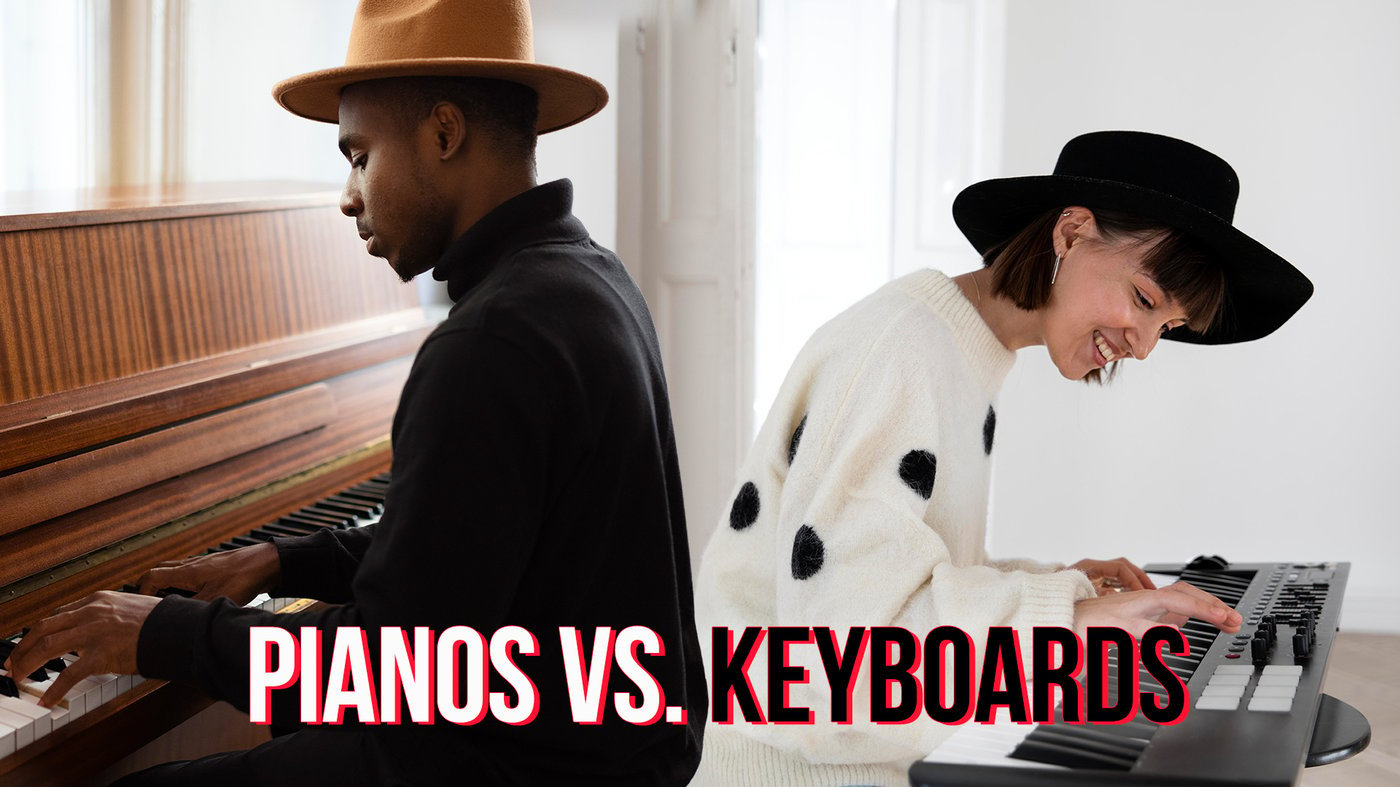
Can you learn piano on a keyboard? What’s the difference between keyboards and pianos, anyway? Here’s an explanation and tips on which to buy based on your unique needs.
Table of Contents
Get free lessons, tips, and piano news delivered to your inbox every week. Subscribe to The Note!
Technically, a “keyboard” is any musical interface with black and white keys like the piano emoji: 🎹. But when most people say “keyboard,” they really mean a digital piano like this:
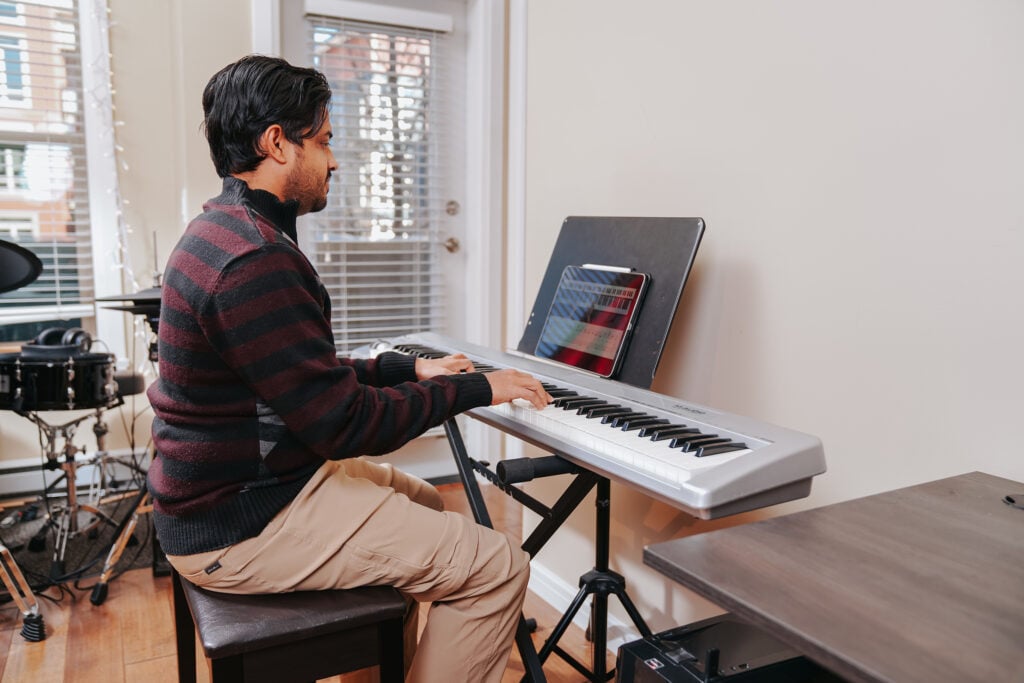
This is an instrument designed to mimic the sound and experience of an acoustic piano.
So, the main difference between a “keyboard” and a “piano” is that a keyboard runs on electricity and produces sound through sampling or modeling; meanwhile, an acoustic piano doesn’t require electricity and produces sound through vibrating strings, which are then amplified by a spruce soundboard. Here’s a summary of the main differences between keyboards and pianos:
| Characteristics | Keyboard (Digital Piano) | Piano (Acoustic Piano) |
|---|---|---|
| Main Difference | Powered by electricity. Sound is created through sampling or modeling. | Powered by the player. Sound is created through vibrating strings amplified by a spruce soundboard. |
| Number of Keys | 49, 61, 73, or 88 | 88 |
| Action | Varies from unweighted and springy to weighted, authentic, and expressive. | Always weighted, but upright pianos feel springier and less nuanced than grand pianos. |
| Sound | Depends on quality of sound engine and speakers. | Authentic, warm, powerful, and tactile because the entire instrument resonates beneath your fingers. |
| Features | Features may include MIDI connectivity, Bluetooth, microphone input, attachable pedals, pitch wheel, built-in metronome, transposition, drum beats, and more. | No electric features. Pedals vary but standard grand pianos have three pedals. |
| Cost | ~$500-$5k | ~$5k-$300k+ |
| Maintenance | Minimal maintenance required. | Should ideally be tuned by a professional tuner twice a year. |
| Ideal Player |
|
|
Other than cost (which, as you can see, can be an enormous difference!), the most important areas of difference between keyboards and pianos are sound and feel.
To keep things simple, we’ll refer to “keyboards” and “pianos” in this article the way most people understand these terms: keyboards are digital pianos that need to be plugged in; pianos are acoustic.
Keyboards and digital pianos are sometimes confused with synthesizers. If you want to be exact, this is what each term technically means:
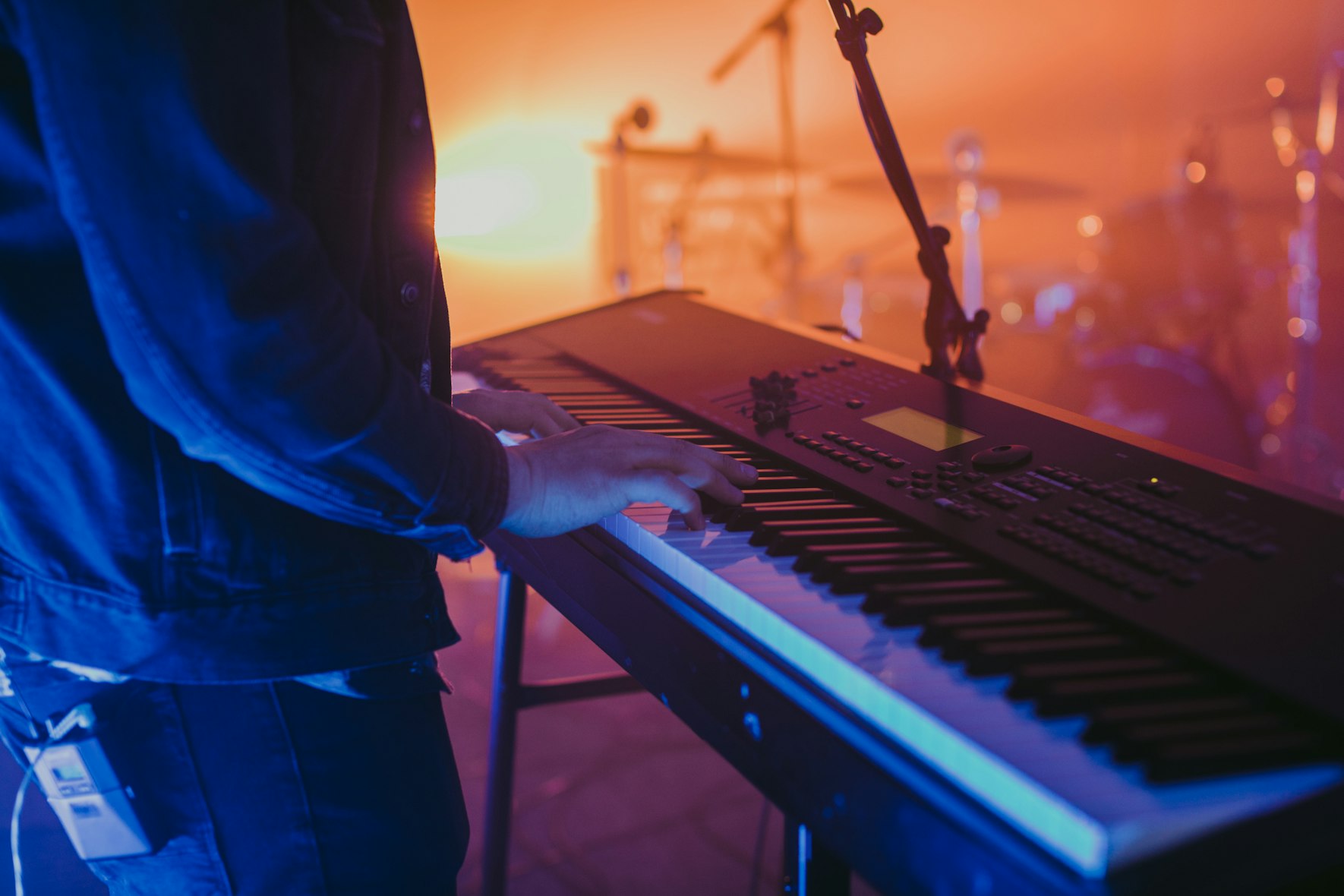
Acoustic Piano Sound: Resonant, Powerful, Majestic
Think about it: a concert grand can play against an entire orchestra and still be heard without any electronic amplification. Acoustic pianos are engineering marvels and playing them is an incredible experience because you can feel the entire instrument resonating beneath your fingers.
But this incredible sound has drawbacks. Acoustic pianos are loud and you can’t adjust a volume knob. And unless you’re in a large enough space (like a concert hall) with adequate acoustics, you won’t experience the true potential of a good acoustic.
Keyboard (Digital Piano) Sound: Immersive, Flexible, Customizable
Keyboards lack the majestic feel of a true acoustic, but their convenience can’t be understated. With headphones, you can play at all hours of the night. And you can change your keyboard’s sound to that of a vintage electric piano, a European grand, an American grand, or whatever cool sound effect your instrument comes with.
With a good pair of headphones, keyboards also provide an immersive playing experience, no concert hall required.
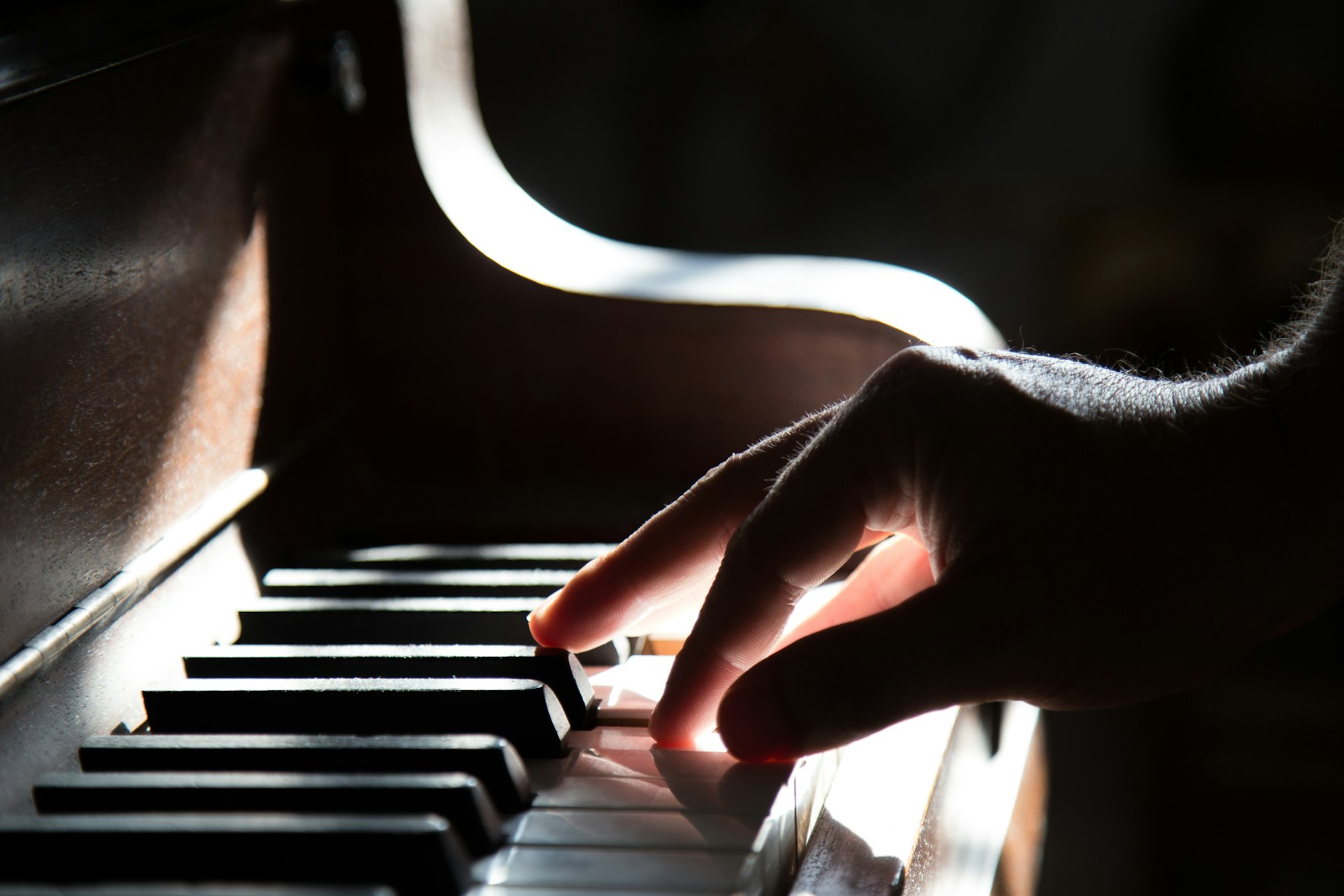
Acoustic Piano Feel: Weighted Action, Grand vs. Upright
A keyboard instrument’s action is one of its most defining features. Action refers to the key mechanism that, when pushed down, produces a sound.
Action in acoustic upright and grand pianos is always weighted, meaning the harder you play, the louder you’ll sound. How this actually feels varies widely, though. In upright pianos, the hammer returns to rest thanks to springs, which can make the keys feel shallower and more sluggish. Grand piano action is considered superior because hammers return to rest thanks to gravity. Repetition is faster and nuances are greater on grand pianos.
The brand and product tier of the piano is also a big factor in its feel.
Keyboard Feel: Unweighted, Semi-Weighted, and Weighted Actions
Action in keyboards (digital pianos) vary. Some keyboards offer an action designed to mimic an acoustic piano’s as closely as possible. Other keyboards are completely unweighted and playing them feels like pressing buttons. Again, brand and product tier will affect how a particular instrument feels.
It is important for beginner piano players to learn on a weighted keyboard instrument so they can develop good technique from day one. So, if you plan on buying a digital piano, try your best to buy one with weighted keys.
Action is a very personal preference. Just because one instrument is expensive due to its purportedly amazing action doesn’t mean you’ll enjoy it! That’s why it’s so important to go to a music store and spend time playing their instruments.
These are slightly different jobs! A keyboardist is typically a musician who plays keys as part of a band. They’ll use digital stage pianos and synthesizers. Keyboardists are mainly found in genres like pop, rock, and R&B. Famous keyboardists include progressive rock icons like Jordan Rudess of Dream Theatre and Lawrence Gowan of Styx.
“Pianist” typically refers to jazz pianists and classical pianists. These musicians are more likely to play acoustic instruments. Today’s famous pianists include Lang Lang in the classical sphere and Herbie Hancock in the jazz world.
Yes! Just keep a few things in mind.
For the best learning experience, get a keyboard with the following features: weighted keys, 88 keys, and a sustain pedal. Again—always try before you buy.
Ideally, students should learn on an acoustic piano because this helps them develop good technique, but we understand that a big, loud, $10k instrument is not within reach for many folks. Thankfully, digital pianos have come a long way in the last decade and they are no longer seen as vastly inferior to acoustic pianos. Today, digital pianos are an absolutely legitimate instrument to learn on.
Coming up next: a summary of pros and cons for both digital pianos and acoustic pianos…
TThere’s one more category of piano we haven’t talked about, and that’s hybrid pianos. Hybrid pianos combine an acoustic action mechanism with a digital sound engine. The action is 100% acoustic and the sound is 100% digital. This enables silent practice, easy recording, and multiple sounds in a package that really isn’t that different from an acoustic piano.
Compared to digital pianos, hybrids are larger and more expensive. But they are also smaller and cheaper than true acoustics. If you’re a serious pianist who wants an acoustic piano but don’t have the budget or space required, a hybrid may be the perfect choice!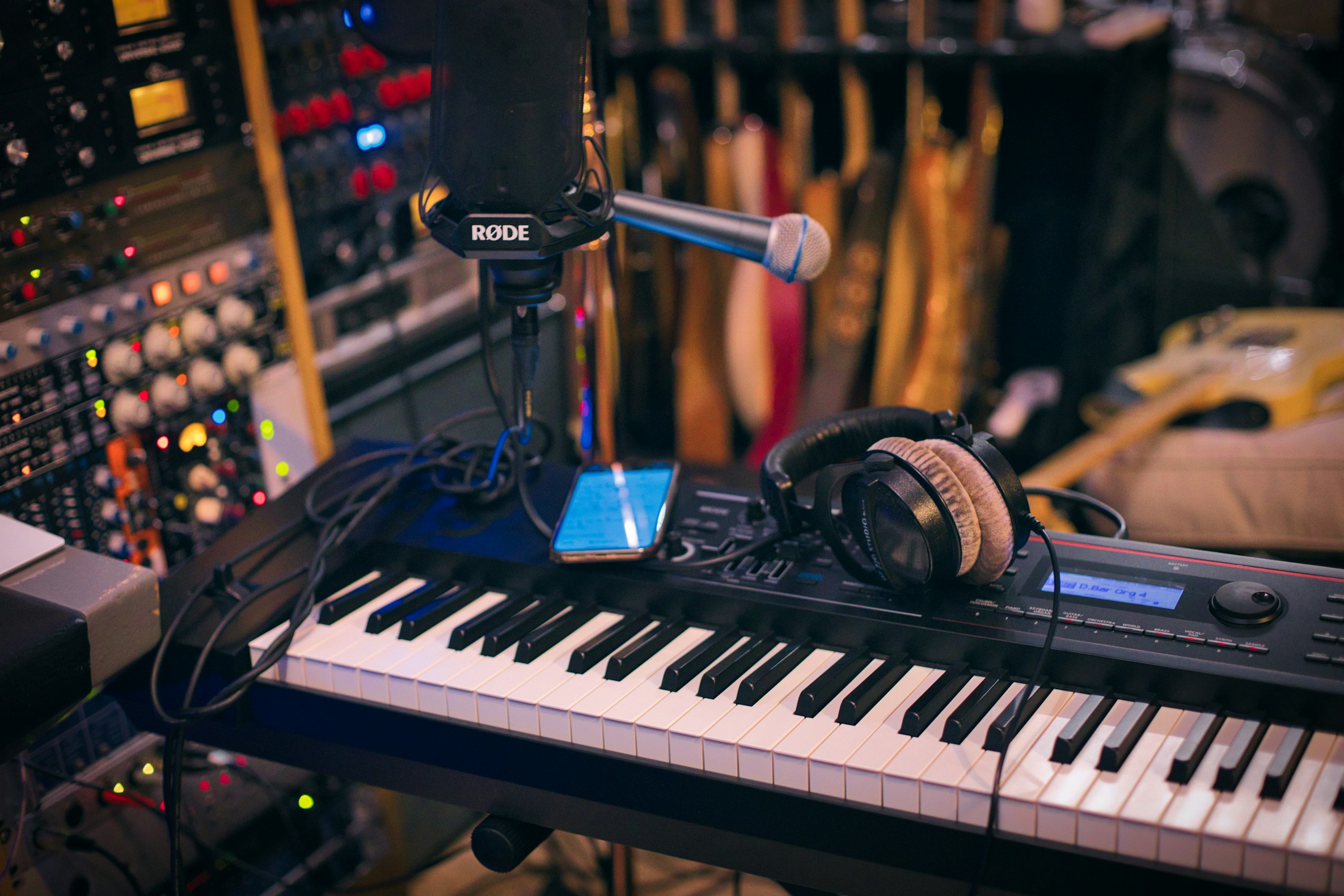
| Pros | Cons |
|---|---|
|
|
Ideal Digital Piano Customers:

| Pros | Cons |
|---|---|
|
|
Ideal Acoustic Piano Customers:
The decision to buy a piano is a very personal one. Things you might take into consideration include:
On top of these personal considerations, there are a few guidelines that any piano student should follow:
More posts bout buying the right instrument:
And if you want to learn more about pianos…
Bought your piano and ready to dive in? Visit our Start Here section for free resources. Or try Pianote for seven days, 100% free.
As a Pianote Member, you’ll get access to our 10-step Method, song library, and growing community of piano players just like you. Plus: get coached by world-class pianists and learn whenever you want, wherever you want, and whatever you want.
TRY PIANOTE FOR 7 DAYSCharmaine Li is a Vancouver writer who has played piano for over 20 years. She holds an Associate diploma (ARCT) from the Royal Conservatory of Music and loves writing about the ways in which music—and music learning—affects the human experience. Charmaine manages The Note. Learn more about Charmaine here.
/marketing/pianote/promos/april/banner-bg-m.webp)
We use cookies for traffic data and advertising. Cookie Policy »
/marketing/pianote/promos/april/banner-title.webp)